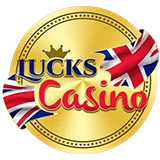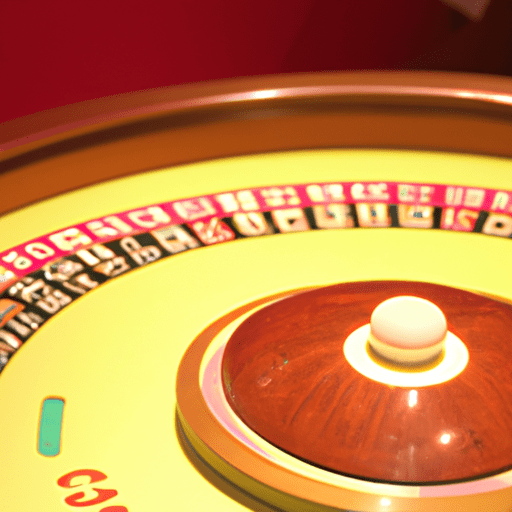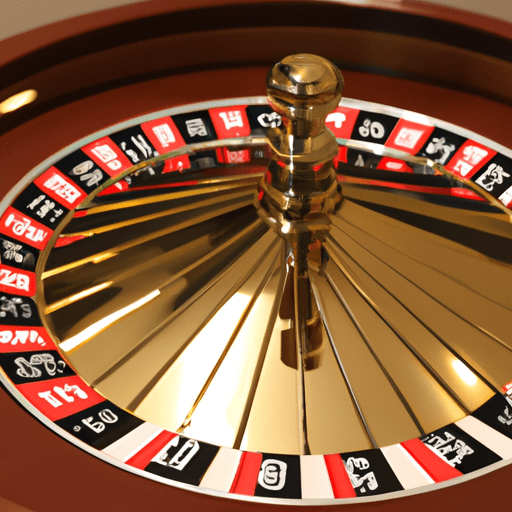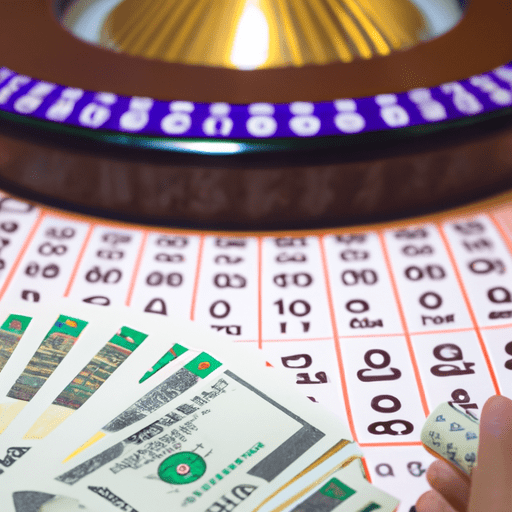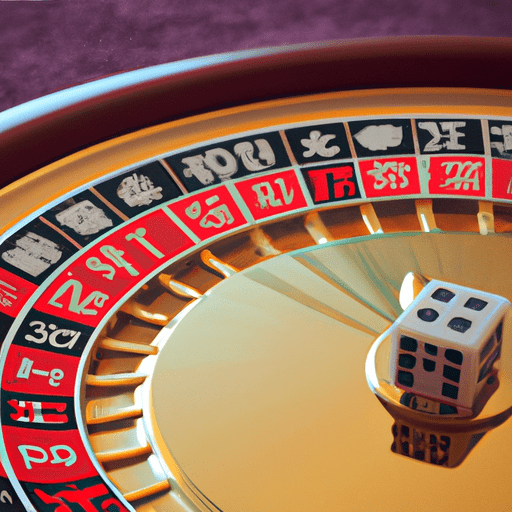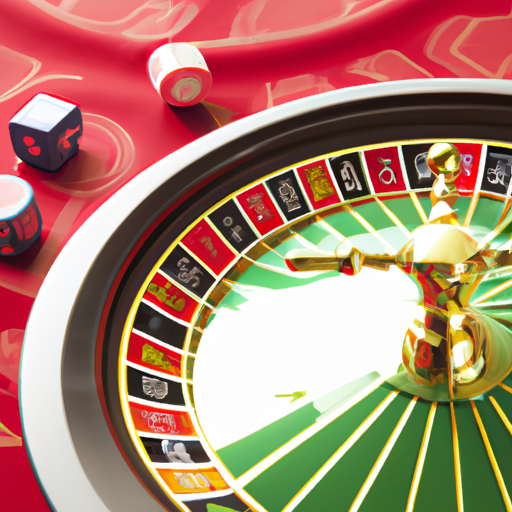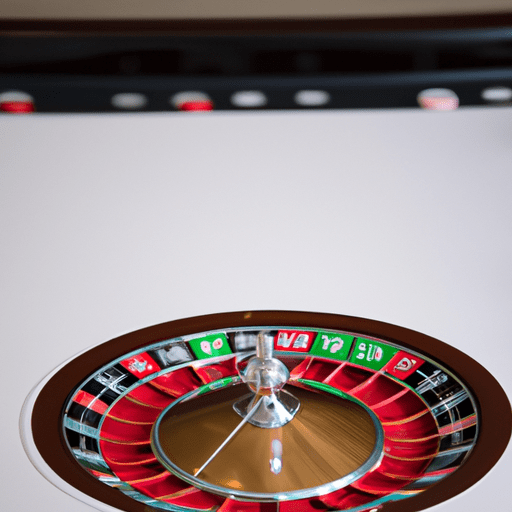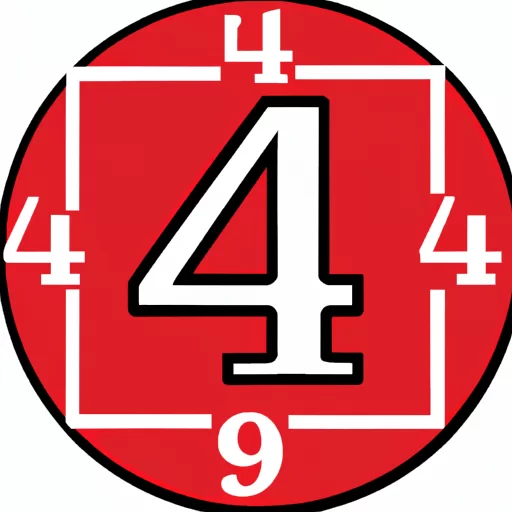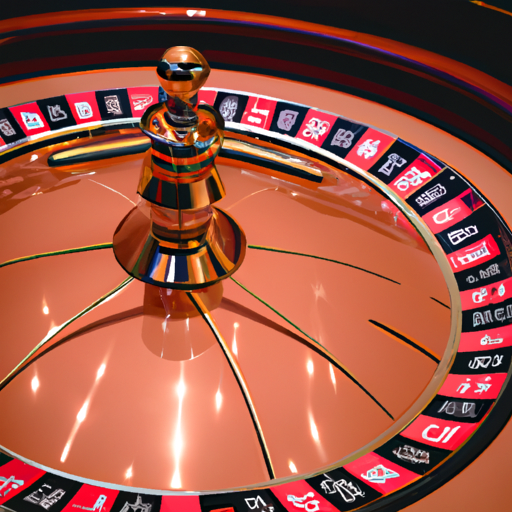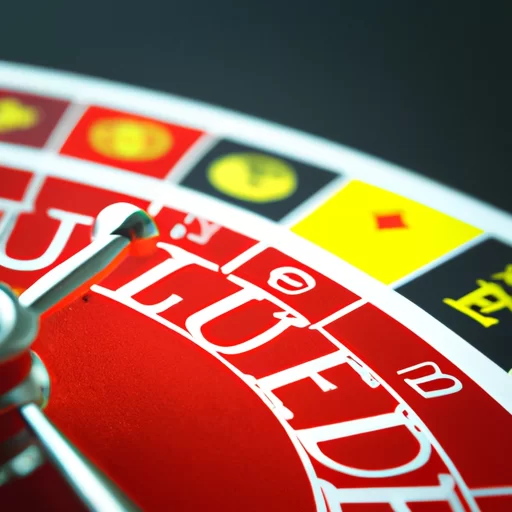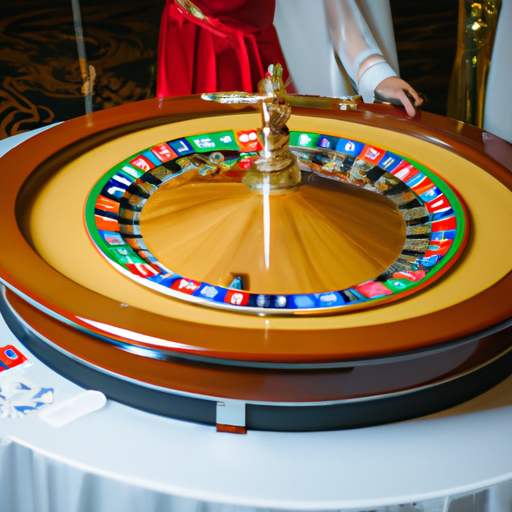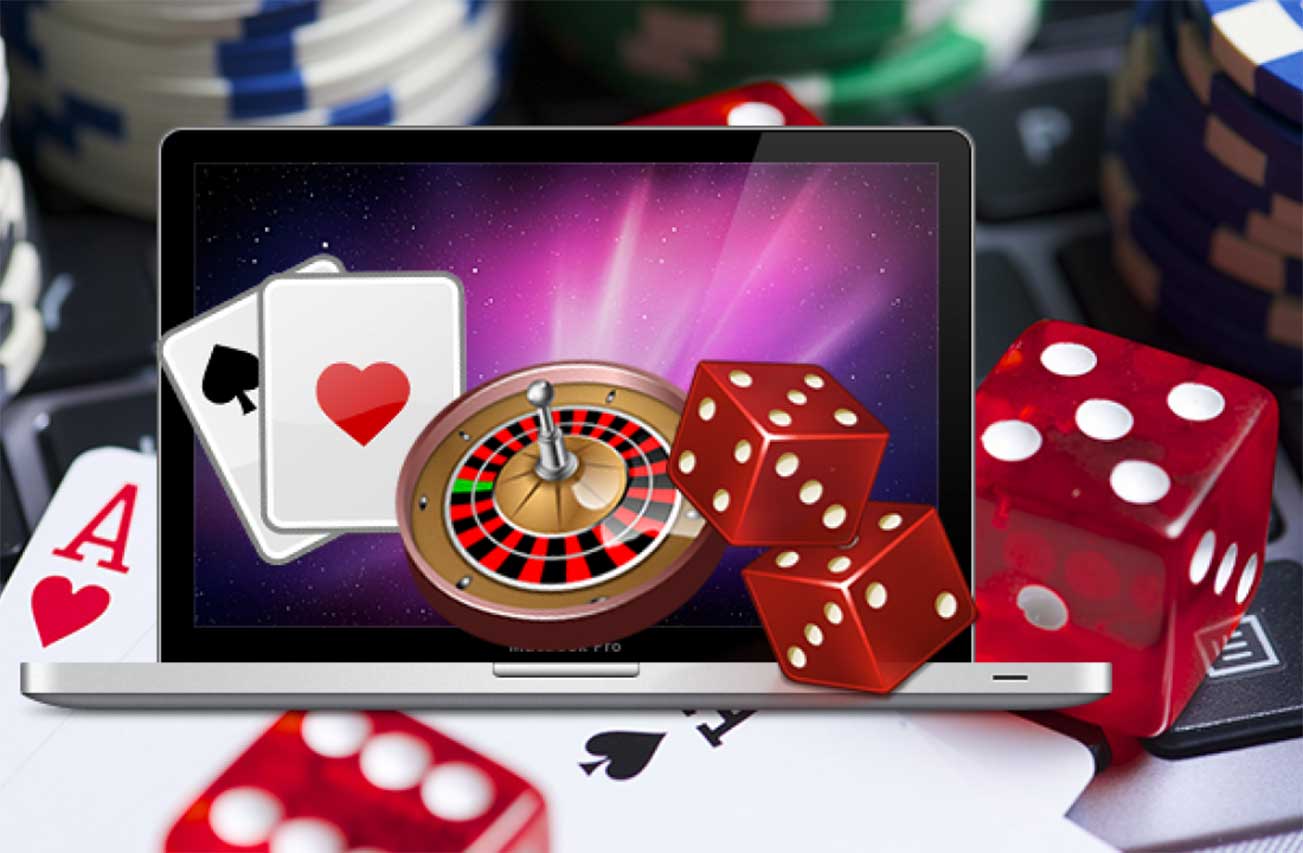 The Phone Bill Gambling & Casino SMS Bill with Coinfalls Casino, Pocketwin Review posts at CasinoPhoneBill.com
The Phone Bill Gambling & Casino SMS Bill with Coinfalls Casino, Pocketwin Review posts at CasinoPhoneBill.com
Japanese Roulette VS European Roulette
-
Casino Phone Bill Slots | Mobile Casino, Bets and Gambling Views
“Experience the thrill of two unique cultures in one game: Japanese Roulette VS European Roulette.”
Introduction
Japanese Roulette and European Roulette are two popular variations of the classic casino game. While each video games share similarities, there are additionally distinct variations between them that make every unique. In this article, we will discover the variations between Japanese Roulette and European Roulette, including the guidelines, odds, and total gameplay expertise.
Differences in Rules
Roulette is a popular casino game that has been loved by gamers for hundreds of years. It is a game of likelihood that entails a spinning wheel and a ball, with gamers inserting bets on the place the ball will land. There are two fundamental variations of roulette: Japanese roulette and European roulette. While each video games share some similarities, there are additionally some key variations in the guidelines that gamers must be conscious of.
One of the fundamental variations between Japanese roulette and European roulette is the quantity of pockets on the wheel. In European roulette, there are 37 pockets, numbered from 0 to 36. In Japanese roulette, there are 38 pockets, with an additional pocket marked with a symbol that represents the home edge. This implies that the odds of winning in Japanese roulette are barely decrease than in European roulette.
Another distinction between the two variations of roulette is the way in which bets are positioned. In European roulette, gamers can place their chips on any quantity or combination of numbers on the desk. They may place bets on whether or not the ball will land on an odd and even quantity, a crimson or black pocket, or a high or low quantity. In Japanese roulette, gamers can only place bets on specific numbers or mixtures of numbers. This implies that there are fewer betting options out there in Japanese roulette.
The way in which payouts are calculated can be totally different between the two variations of roulette. In European roulette, payouts are based on the odds of winning and the amount of cash that was bet. For instance, if a player bets $10 on a single quantity and wins, they will receive a payout of $350 (35 times their original bet). In Japanese roulette, payouts are mounted and don't change based on the amount of cash that was bet. This implies that gamers can win more cash in European roulette in the event that they place bigger bets.
One closing distinction between Japanese roulette and European roulette is the way in which the game is played. In European roulette, the vendor spins the wheel and drops the ball onto it. Players can continue to place bets until the vendor pronounces that no more bets may be positioned. In Japanese roulette, the vendor makes use of a button to spin the wheel and drop the ball. Once the ball has been dropped, no more bets may be positioned.
In conclusion, whereas each Japanese roulette and European roulette are popular casino video games that contain a spinning wheel and a ball, there are some key variations in the guidelines that gamers must be conscious of. Japanese roulette has an extra pocket on the wheel, fewer betting options, mounted payouts, and a totally different way of playing in comparison with European roulette. Understanding these variations might help gamers make knowledgeable selections about which version of roulette to play and how to place their bets.
House Edge Comparison
Roulette is one of the most popular casino video games in the world. It is a game of likelihood that has been loved by millions of people for hundreds of years. There are two fundamental varieties of roulette: Japanese roulette and European roulette. Both video games have their own unique features, but one of the most important variations between them is the home edge.
The home edge is the percentage of every bet that the casino expects to keep over the long time period. In different phrases, it is the amount of cash that the casino expects to make from every bet. The home edge varies relying on the type of roulette being played.
In Japanese roulette, the home edge is often increased than in European roulette. This is as a result of Japanese roulette has an extra slot on the wheel, often known as the “joker” slot. This slot will increase the quantity of potential outcomes, which makes it more difficult for gamers to win.
In European roulette, there are 37 slots on the wheel: 18 crimson, 18 black, and one green (the “zero” slot). This gives gamers a barely better likelihood of winning than in Japanese roulette. The home edge in European roulette is around 2.7%, which implies that for each $100 bet, the casino expects to keep around $2.70.
In distinction, the home edge in Japanese roulette may be as high as 5.26%. This implies that for each $100 bet, the casino expects to keep around $5.26. This might not seem to be a big distinction, but over time it can add as much as a important amount of cash.
Of course, it's important to do not forget that these are simply averages. The actual home edge can range relying on a quantity of components, including the specific guidelines of the game and how expert the gamers are.
Another important issue to think about when evaluating Japanese and European roulette is the betting options out there. In European roulette, gamers can place a variety of bets, including straight bets (betting on a single quantity), break up bets (betting on two adjoining numbers), and outdoors bets (betting on teams of numbers akin to crimson or black).
In Japanese roulette, the betting options are more limited. Players can only place straight bets, which implies that they're betting on a single quantity. This can make the game more difficult for some gamers, as they've fewer options to select from.
Despite these variations, each Japanese and European roulette may be a lot of fun to play. Whether you want the extra challenge of Japanese roulette or the barely better odds of European roulette, there's something for everybody.
Ultimately, the choice between Japanese and European roulette comes down to non-public desire. Some gamers might want the excitement of the joker slot in Japanese roulette, whereas others might want the more conventional gameplay of European roulette. Whatever your desire, it's important to do not forget that each video games have their own unique features and may be a lot of fun to play.
Betting Options
When it involves casino video games, roulette is one of the most popular decisions. It's a game of likelihood that's easy to know and offers a thrilling expertise. However, there are totally different variations of roulette, and each has its own unique features. In this article, we'll compare Japanese roulette and European roulette, two popular variations of the game.
Firstly, let's take a take a look at European roulette. This version of the game has 37 pockets on the wheel, numbered from 0 to 36. The numbers are coloured in crimson and black, aside from the 0 which is green. The goal of the game is to foretell the place the ball will land on the wheel after it's spun. Players can place their bets on a single quantity, a group of numbers, and even on the shade of the pocket.
One of the advantages of European roulette is that it has a decrease home edge in comparison with different variations of the game. The home edge is the percentage of every bet that the casino expects to keep over time. In European roulette, the home edge is around 2.7%, which implies that gamers have a better likelihood of winning.
On the different hand, Japanese roulette is a variation that's gaining reputation in Asia. This version of the game has 38 pockets on the wheel, similar to American roulette. However, not like American roulette the place there are two green pockets (0 and 00), Japanese roulette has only one green pocket labeled as “SP”. The relaxation of the pockets are numbered from 1 to 36 and coloured in crimson and black.
One of the unique features of Japanese roulette is that it offers a wider range of betting options in comparison with European roulette. For instance, gamers can place bets on “odd” or “even” numbers, “big” or “small” numbers, and even on specific mixtures akin to “red 13” or “black 28”. This gives gamers more flexibility in their betting methods and can result in more exciting gameplay.
However, the draw back of Japanese roulette is that it has a increased home edge in comparison with European roulette. The home edge in Japanese roulette is around 3.85%, which implies that gamers have a decrease likelihood of winning. This is because of the extra pocket on the wheel, which will increase the odds of the ball touchdown on a pocket that's not coated by the player's bet.
In conclusion, each European roulette and Japanese roulette provide unique features and betting options. European roulette has a decrease home edge, making it a better choice for gamers who wish to maximize their chances of winning. On the different hand, Japanese roulette offers more betting options and may be more exciting for gamers who wish to try totally different methods. Ultimately, the choice between these two variations of roulette comes down to non-public desire and playing style.
Wheel Layout
When it involves casino video games, roulette is one of the most popular decisions. The game entails a spinning wheel with numbered pockets and a small ball that's dropped onto the wheel. Players place bets on the place they suppose the ball will land, and in the event that they guess accurately, they win.
There are two fundamental varieties of roulette: Japanese and European. While each video games share many similarities, there are additionally some key variations that set them aside. One of the most noticeable variations is the layout of the wheel.
In European roulette, the wheel has 37 pockets numbered from 0 to 36. The numbers are organized in a specific order, with odd numbers alternating with even numbers. The zero pocket is green and situated at the top of the wheel.
Japanese roulette, on the different hand, has a barely totally different layout. The wheel nonetheless has 37 pockets, but the numbers are organized in a totally different order. Instead of alternating odd and even numbers, the numbers are organized in a more random sample. Additionally, the zero pocket is commonly crimson as a substitute of green.
The layout of the wheel might seem to be a minor distinction, but it can even have a important affect on gameplay. In European roulette, gamers can use a strategy referred to as the “Martingale system” to extend their chances of winning. This strategy entails doubling your bet after every loss, with the idea that finally you will win and recoup all of your losses.
However, this strategy doesn't work as well in Japanese roulette as a result of the random association of numbers makes it more durable to foretell the place the ball will land. Without a predictable sample to comply with, it's more difficult to find out which bets are more more likely to win.
Another distinction between Japanese and European roulette is the way that bets are positioned. In European roulette, gamers place their chips on a desk with designated areas for every type of bet. There are inside bets (akin to betting on a specific quantity) and outdoors bets (akin to betting on crimson or black).
In Japanese roulette, nonetheless, gamers place their bets immediately on the wheel itself. This can make it more difficult to keep track of your bets, particularly if you're playing a number of rounds.
Overall, the layout of the wheel is only one of the many variations between Japanese and European roulette. While each video games provide the identical primary gameplay, the small variations can have a big affect on strategy and total enjoyment of the game. Whether you want the more predictable layout of European roulette or the randomness of Japanese roulette, each video games provide loads of excitement and opportunities to win big.
Number of Pockets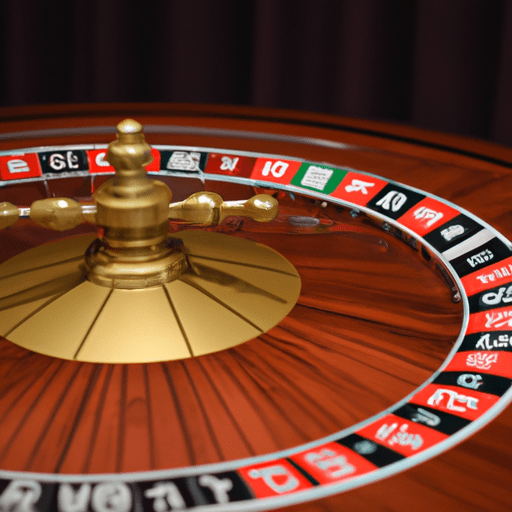
Roulette is a popular casino game that has been loved by gamers for hundreds of years. It is a game of likelihood that entails a spinning wheel and a ball. The goal of the game is to foretell the place the ball will land on the wheel. There are two fundamental varieties of roulette: Japanese roulette and European roulette. In this article, we will compare the quantity of pockets in every type of roulette.
European roulette is the most frequent type of roulette played in casinos around the world. It has 37 pockets, numbered from 0 to 36. The pockets are coloured crimson and black, with the exception of the 0 pocket, which is green. The numbers on the wheel are organized in a specific order, with odd numbers alternating with even numbers. The layout of the European roulette wheel is standardized, which implies that it is the identical in each casino.
Japanese roulette, on the different hand, has 38 pockets. It is just like European roulette in lots of ways, but it has an additional pocket that's labeled with a symbol as a substitute of a quantity. This pocket is known as the “dragon” pocket and it is coloured crimson. The dragon pocket is situated between the 5 and 10 pockets on the wheel.
The addition of the dragon pocket in Japanese roulette gives gamers an extra betting option. Players can bet on whether or not the ball will land on the dragon pocket or not. This provides a component of excitement to the game and makes it more interesting for gamers who're looking for one thing totally different.
However, some gamers want European roulette as a result of it has better odds than Japanese roulette. The addition of the dragon pocket in Japanese roulette will increase the home edge, which implies that gamers are more more likely to lose cash over time. In European roulette, the home edge is decrease as a result of there are fewer pockets on the wheel.
Another distinction between Japanese and European roulette is the way that the numbers are organized on the wheel. In European roulette, the numbers are organized in a specific order, with odd numbers alternating with even numbers. In Japanese roulette, the numbers are organized in a more random order. This can make it more difficult for gamers to foretell the place the ball will land.
In conclusion, the quantity of pockets is an important issue to think about when choosing between Japanese and European roulette. European roulette has 37 pockets, whereas Japanese roulette has 38 pockets. The addition of the dragon pocket in Japanese roulette gives gamers an extra betting option, but it additionally will increase the home edge. European roulette has better odds as a result of there are fewer pockets on the wheel. Ultimately, the choice between Japanese and European roulette comes down to non-public desire and playing style.
Odds of Winning
When it involves casino video games, roulette is one of the most popular decisions. The game is simple, but exciting, and offers gamers the likelihood to win big. However, not all roulette video games are created equal. There are totally different variations of the game, every with its own set of guidelines and odds of winning. In this article, we will compare Japanese roulette and European roulette in terms of their odds of winning.
European roulette is the most frequent variation of the game. It features a wheel with 37 numbered pockets, from 0 to 36. The pockets are coloured crimson or black, aside from the 0 pocket which is green. To play the game, gamers place their bets on the desk, predicting the place the ball will land on the wheel. If the ball lands on a pocket that matches their bet, they win.
The odds of winning in European roulette are simple. There are 37 pockets on the wheel, so the likelihood of the ball touchdown on any given pocket is 1 in 37. This implies that the home edge in European roulette is 2.7%. In different phrases, for each $100 bet on the game, the casino can anticipate to make a revenue of $2.70.
Japanese roulette, on the different hand, is a variation that's unique to Japan. It features a wheel with 38 numbered pockets, from 1 to 36 and two special pockets labeled “chance”. The pockets are coloured crimson or black, aside from the “chance” pockets which are yellow. The guidelines of the game are just like European roulette – gamers place their bets on the desk and hope that the ball lands on a pocket that matches their bet.
The odds of winning in Japanese roulette are barely totally different from these in European roulette. With 38 pockets on the wheel, the likelihood of the ball touchdown on any given pocket is 1 in 38. This implies that the home edge in Japanese roulette is 2.63%. While this might seem to be a small distinction, it can have a important affect on the player's chances of winning.
To put it into perspective, let's say you bet $100 on a single quantity in European roulette. The odds of winning are 1 in 37, and the payout is 35 to 1. This implies that if you win, you will receive $3,500 ($100 x 35). However, if you lose, you will lose your whole bet of $100.
Now let's say you bet $100 on a single quantity in Japanese roulette. The odds of winning are 1 in 38, and the payout can be 35 to 1. However, as a result of the home edge is decrease, your anticipated return on funding is barely increased. In European roulette, your anticipated return on funding is -2.7% (i.e., you can anticipate to lose $2.70 for each $100 bet). In Japanese roulette, your anticipated return on funding is -2.63% (i.e., you can anticipate to lose $2.63 for each $100 bet).
While the distinction in odds between European and Japanese roulette could appear small, it can add up over time. If you are a frequent roulette player, choosing the game with the decrease home edge can make a important distinction in your total winnings.
In conclusion, when it involves the odds of winning in roulette, European and Japanese variations differ barely. European roulette has a home edge of 2.7%, whereas Japanese roulette has a home edge of 2.63%. While this might not seem to be a important distinction, it can have an effect in your total winnings. If you are looking to maximise your chances of winning at roulette, choosing the game with the decrease home edge is always a good strategy.
Popular Strategies
Roulette is one of the most popular casino video games in the world. It is a game of likelihood that has been played for hundreds of years, and it has developed over time to include totally different variations. Two of the most popular variations are Japanese Roulette and European Roulette. While each video games share some similarities, additionally they have some important variations.
One of the fundamental variations between Japanese Roulette and European Roulette is the quantity of pockets on the wheel. European Roulette has 37 pockets, including one green pocket for the quantity zero. Japanese Roulette, on the different hand, has 38 pockets, including two green pockets for the numbers zero and double zero. This implies that the odds of winning in European Roulette are barely better than in Japanese Roulette.
Another distinction between the two video games is the betting options. In European Roulette, gamers can place bets on a variety of outcomes, including odd and even numbers, crimson or black pockets, and specific numbers. In Japanese Roulette, gamers may place bets on these outcomes, but they'll additionally place bets on specific mixtures of numbers. This gives gamers more betting options in Japanese Roulette than in European Roulette.
The guidelines for playing Japanese Roulette and European Roulette are additionally barely totally different. In European Roulette, the vendor spins the wheel and then drops a small ball onto it. Players then place their bets before the ball involves a cease in a single of the pockets. In Japanese Roulette, the vendor makes use of a small wand to spin the wheel and then drops the ball onto it. Players can continue to place bets until the vendor pronounces that no more bets may be positioned.
Despite these variations, each Japanese Roulette and European Roulette are popular among casino gamers around the world. Many gamers have developed methods for playing these video games in order to extend their chances of winning.
One popular strategy for playing European Roulette is known as the Martingale system. This strategy entails doubling your bet after every loss in order to recoup your losses and make a revenue. However, this strategy may be dangerous, as it requires a giant bankroll and there isn't any assure that you will win.
Another popular strategy for playing European Roulette is known as the D'Alembert system. This strategy entails growing your bet by one unit after every loss and reducing your bet by one unit after every win. This strategy is much less dangerous than the Martingale system, but it additionally has its drawbacks.
In Japanese Roulette, gamers typically use a strategy referred to as the James Bond system. This strategy entails inserting bets on specific mixtures of numbers in order to cover a giant portion of the wheel. For instance, gamers may place bets on the numbers 0, 13-18, and 25-36. This strategy may be efficient, but it additionally requires a giant bankroll and there isn't any assure of winning.
Ultimately, the greatest strategy for playing Japanese Roulette or European Roulette is determined by your private preferences and playing style. Some gamers want to take dangers and use aggressive betting methods, whereas others want to play it safe and stick to more conservative betting methods. Whatever your method, it is important to do not forget that roulette is a game of likelihood and there isn't any assured way to win.
Historical Significance
Roulette is a popular casino game that has been loved by millions of people around the world for hundreds of years. The game originated in France in the 18th century and rapidly unfold to different parts of Europe, including Germany and Italy. However, it was not until the nineteenth century that roulette made its way to Japan.
Japanese Roulette is a variation of the game that's played with a smaller wheel and fewer numbers than its European counterpart. The game is also referred to as “Renzoku Roulette” or “Continuous Roulette” as a result of gamers can place bets on a number of spins of the wheel.
The historical past of Japanese Roulette may be traced again to the early twentieth century when it was launched to Japan by European immigrants. At the time, playing was unlawful in Japan, so the game was played in secret underground casinos. However, after World War II, the Japanese authorities legalized playing, and casinos started to open up throughout the nation.
Today, Japanese Roulette is a popular game in lots of Japanese casinos, and it has even gained a following outdoors of Japan. However, it remains to be not as well-often known as European Roulette, which stays the most popular version of the game worldwide.
European Roulette has a long and storied historical past that dates again to the 18th century. The game was invented by French mathematician Blaise Pascal, who was attempting to create a perpetual movement machine. While he did not achieve his quest, he did create one of the most popular casino video games of all time.
European Roulette features a bigger wheel than Japanese Roulette and contains 37 numbered pockets (0-36). The game is played by inserting bets on the place a ball will land on the spinning wheel. Players can bet on particular person numbers, teams of numbers, and even colours.
Over the years, European Roulette has change into synonymous with glamour and sophistication. It has been featured in numerous movies and TV shows and is commonly associated with high-stakes playing and luxury casinos.
Despite their variations, each Japanese Roulette and European Roulette share a frequent aim: to provide gamers with an exciting and entertaining gaming expertise. Whether you want the smaller wheel and a number of spins of Japanese Roulette or the bigger wheel and classic magnificence of European Roulette, each video games provide loads of thrills and excitement.
In conclusion, whereas Japanese Roulette will not be as well-often known as its European counterpart, it nonetheless holds a important place in the historical past of casino gaming. Both video games provide unique variations on the classic roulette formulation and provide gamers with hours of entertainment. Whether you are a seasoned gambler or a informal player, each Japanese Roulette and European Roulette are value checking out.
Cultural Significance
Roulette is a popular casino game that has been loved by people throughout the world for hundreds of years. It is a game of likelihood that entails a spinning wheel and a ball, with gamers betting on the place the ball will land. There are two fundamental varieties of roulette: Japanese roulette and European roulette. While each video games share some similarities, additionally they have some important variations that make them unique.
Japanese roulette, also referred to as Rensha roulette, is a variation of the game that's popular in Japan. It is played on a vertical wheel that spins horizontally, with the ball being launched into the wheel by a mechanical arm. The numbers on the wheel are organized in a totally different order than in European roulette, and there are additionally some additional betting options out there.
One of the most important variations between Japanese and European roulette is the cultural significance of the video games. In Japan, playing is usually frowned upon, and many people view it as a vice. However, Rensha roulette is seen as more of a game than a form of playing, and it is commonly played at festivals and different cultural occasions. The game has change into an important half of Japanese culture, and many people enjoy playing it for fun somewhat than for cash.
European roulette, on the different hand, has a long historical past in Europe and is taken into account one of the classic casino video games. It is played on a horizontal wheel that spins vertically, with the ball being dropped onto the wheel by the vendor. The numbers on the wheel are organized in a specific order, with alternating crimson and black pockets and a green pocket for the quantity zero.
While each Japanese and European roulette are video games of likelihood, there are some important variations in the guidelines and gameplay. In Japanese roulette, gamers can bet on particular person numbers or teams of numbers, as well as on colours and odd and even numbers. There are additionally some additional betting options out there, akin to betting on whether or not the ball will land in a specific part of the wheel.
In European roulette, gamers may bet on particular person numbers or teams of numbers, as well as on colours and odd and even numbers. However, there aren't any additional betting options out there, and the guidelines are usually more simple than in Japanese roulette.
Another important distinction between the two video games is the home edge. In European roulette, the home edge is around 2.7%, which implies that the casino has a slight benefit over the gamers. In Japanese roulette, the home edge is often increased, around 5-6%, which implies that the odds are barely more in favor of the casino.
Overall, each Japanese and European roulette are popular casino video games that provide a unique and exciting expertise for gamers. While they share some similarities, additionally they have some important variations that make them stand out from one another. Whether you want the cultural significance of Rensha roulette or the classic gameplay of European roulette, each video games provide loads of opportunities for fun and excitement.
Famous Roulette Players
Roulette is a game of likelihood that has been loved by gamers for hundreds of years. It is a game that's easy to study, but difficult to master. The game entails a spinning wheel with numbered slots and a ball that's dropped onto the wheel. Players place bets on the place they suppose the ball will land. There are two fundamental varieties of roulette: Japanese Roulette and European Roulette.
Japanese Roulette is a variation of the game that's popular in Japan. It is just like European Roulette, but with a few key variations. The first distinction is the quantity of slots on the wheel. Japanese Roulette has 37 slots, whereas European Roulette has 38 slots. The second distinction is the order of the numbers on the wheel. In Japanese Roulette, the numbers are organized in a totally different order than in European Roulette.
One famous roulette player who most well-liked Japanese Roulette was Akio Kashiwagi. Kashiwagi was a rich businessman from Japan who was recognized for his high-stakes playing. He was a regular at casinos in Las Vegas and Atlantic City, and he was recognized for his love of Japanese Roulette. Kashiwagi would typically place bets of as much as $200,000 per spin, and he was recognized for his aggressive betting style.
Another famous roulette player who most well-liked Japanese Roulette was Yoshio Nakamura. Nakamura was additionally a rich businessman from Japan who was recognized for his love of playing. He was a regular at casinos in Las Vegas and Atlantic City, and he was recognized for his ability at Japanese Roulette. Nakamura would typically place bets of as much as $100,000 per spin, and he was recognized for his calm and collected demeanor at the roulette desk.
European Roulette is the most popular version of the game in Europe and North America. It is played with a wheel that has 38 slots, including one green slot for the quantity 0. The numbers on the wheel are organized in a specific order, with the even numbers alternating with the odd numbers. The game is thought for its high payouts and exciting gameplay.
One famous roulette player who most well-liked European Roulette was Charles Wells. Wells was a British gambler who turned often known as “The Man Who Broke the Bank at Monte Carlo.” He is claimed to have won over a million francs at the roulette desk in Monte Carlo in 1891. Wells was recognized for his daring betting style and his capability to foretell the place the ball would land.
Another famous roulette player who most well-liked European Roulette was Joseph Jagger. Jagger was an English engineer who is claimed to have won over £325,000 at the roulette desk in Monte Carlo in 1873. He is thought for his use of a team of six clerks to record the results of each spin of the wheel, which allowed him to establish a biased wheel and place his bets accordingly.
In conclusion, each Japanese Roulette and European Roulette are popular variations of the game which have been loved by gamers for hundreds of years. Each version has its own unique features and attracts differing kinds of gamers. Whether you want the fast-paced action of Japanese Roulette or the classic gameplay of European Roulette, there may be a version of the game that's sure to suit your style. So why not try your luck at the roulette desk today? Who is aware of, you could possibly be the next famous roulette player!
Online Roulette Variations
Roulette is one of the most popular casino video games in the world. It is a game of likelihood that has been loved by millions of people for hundreds of years. There are many variations of roulette, but two of the most popular are Japanese roulette and European roulette.
Japanese roulette is a variation of the game that's played with a smaller wheel than the conventional European version. The wheel has only 12 slots, numbered from 1 to 12. The game is played with a single zero, which gives the home an edge of 2.7%. The betting options are just like these in European roulette, with gamers capable of bet on particular person numbers, teams of numbers, or colours.
One of the fundamental variations between Japanese roulette and European roulette is the dimension of the wheel. The smaller wheel in Japanese roulette implies that there are fewer potential outcomes, which can make it easier for gamers to win. However, this additionally implies that the payouts are decrease than in European roulette.
European roulette is the most popular version of the game and is played with a bigger wheel than Japanese roulette. The wheel has 37 slots, numbered from 0 to 36. The game is played with a single zero, which gives the home an edge of 2.7%. The betting options in European roulette are more diversified than in Japanese roulette, with gamers capable of bet on particular person numbers, teams of numbers, colours, and even or odd numbers.
One of the advantages of European roulette over Japanese roulette is that there are more potential outcomes, which can make the game more exciting. However, this additionally implies that it may be more difficult to win in European roulette than in Japanese roulette.
Another distinction between Japanese roulette and European roulette is the payout construction. In Japanese roulette, the payouts are decrease than in European roulette as a result of there are fewer potential outcomes. This implies that gamers might win more typically in Japanese roulette but will receive smaller payouts once they do win. In European roulette, the payouts are increased as a result of there are more potential outcomes, which implies that gamers might win much less typically but will receive bigger payouts once they do win.
Overall, each Japanese roulette and European roulette are popular variations of the game that provide totally different advantages and disadvantages. Japanese roulette is a good option for gamers who wish to win more typically but are keen to just accept smaller payouts. European roulette is a good option for gamers who need a more exciting game with the potential for bigger payouts.
When playing online roulette, it is important to decide on a respected casino that offers fair video games and dependable payouts. Players must also remember of the totally different variations of the game and select the one which most accurately fits their preferences and playing style.
In conclusion, Japanese roulette and European roulette are two popular variations of the game that provide totally different advantages and disadvantages. While Japanese roulette could also be easier to win, European roulette offers a more exciting game with the potential for bigger payouts. When playing online roulette, it is important to decide on a respected casino and select the variation of the game that most accurately fits your preferences and playing style.
Future of Roulette Gaming
Roulette is one of the most popular casino video games in the world. It is a game of likelihood that has been loved by millions of people for hundreds of years. The game is simple, but exciting, and it offers gamers the likelihood to win big. However, there are totally different variations of roulette which are played around the world. In this article, we will compare Japanese roulette and European roulette and talk about their variations.
Japanese roulette is a variation of the game that's played in Japan. It is just like European roulette, but there are some key variations. One of the fundamental variations is the quantity of pockets on the wheel. In Japanese roulette, there are only 31 pockets on the wheel, in comparison with 37 pockets in European roulette. This implies that the odds of winning are barely increased in Japanese roulette.
Another distinction between Japanese and European roulette is the way the game is played. In Japanese roulette, gamers use small steel balls as a substitute of chips to place their bets. The balls are positioned on a board that's separate from the wheel. Once all bets have been positioned, the board is lifted and the balls are launched onto the wheel.
European roulette, on the different hand, makes use of chips to place bets. Players place their chips on a desk that's marked with numbers and colours that correspond to these on the wheel. Once all bets have been positioned, the vendor spins the wheel and drops a small ball onto it. The ball finally involves relaxation in a single of the pockets on the wheel, and the winning quantity and shade are introduced.
Despite these variations, each Japanese and European roulette provide gamers an exciting and doubtlessly profitable gaming expertise. However, some gamers might want one variation over the different relying on their private preferences.
For instance, some gamers might want Japanese roulette as a result of of its increased odds of winning. Others might want European roulette as a result of they enjoy utilizing chips to place their bets and watching the ball spin around the wheel.
In addition to those variations, there are additionally cultural components that will affect a player's desire for one variation of roulette over the different. For instance, Japanese gamers could also be more acquainted with Japanese roulette and really feel more comfy playing it, whereas European gamers might want the conventional European version of the game.
Overall, the future of roulette gaming appears bright, with each Japanese and European variations of the game persevering with to draw gamers from around the world. Whether you want the increased odds of winning in Japanese roulette or the conventional gameplay of European roulette, there's something for everybody in this exciting and timeless casino game. So why not give each variations a try and see which one you want? Who is aware of, you may hit the jackpot!
Q&A
1. What is Japanese Roulette?
Japanese Roulette is a variation of roulette that's played with a ball and a spinning wheel, but with totally different guidelines and betting options than conventional European roulette.
2. What is European Roulette?
European Roulette is the most frequent version of roulette played in casinos around the world. It features a spinning wheel with numbered slots and a ball that's dropped onto the wheel.
3. How many numbers are on a Japanese Roulette wheel?
A Japanese Roulette wheel sometimes has 36 numbers, plus a single zero.
4. How many numbers are on a European Roulette wheel?
A European Roulette wheel has 37 numbers, including a single zero.
5. What are the betting options in Japanese Roulette?
In Japanese Roulette, gamers can bet on particular person numbers, teams of numbers, or colours. There are additionally special bets that may be positioned on specific mixtures of numbers.
6. What are the betting options in European Roulette?
In European Roulette, gamers can bet on particular person numbers, teams of numbers, or colours. There are additionally special bets that may be positioned on specific mixtures of numbers.
7. Is there any distinction in the odds between Japanese and European Roulette?
Yes, there may be a distinction in the odds between Japanese and European Roulette because of the totally different quantity of slots on the wheel.
8. Which version of roulette offers better odds for gamers?
European Roulette usually offers better odds for gamers because of the presence of only one zero slot on the wheel.
9. Are there any unique guidelines in Japanese Roulette?
Yes, there are unique guidelines in Japanese Roulette akin to “En Prison” and “La Partage” which have an effect on how bets are dealt with when the ball lands on zero.
10. Are there any unique guidelines in European Roulette?
No, there aren't any unique guidelines in European Roulette past standard roulette guidelines.
11. Which version of roulette is more popular worldwide?
European Roulette is more popular worldwide because of its widespread availability in casinos.
12. Can gamers use the identical methods in each Japanese and European Roulette?
Some methods may go in each variations of roulette, but gamers must be conscious of the variations in odds and guidelines when making use of them.
Conclusion
Conclusion: Japanese Roulette and European Roulette are two totally different variations of the classic casino game. While each video games share similarities, akin to the use of a spinning wheel and betting on the place the ball will land, there are additionally important variations. Japanese Roulette features a unique layout and additional betting options, whereas European Roulette has a less complicated layout and fewer betting options. Ultimately, the choice between the two video games comes down to non-public desire and playing style.



